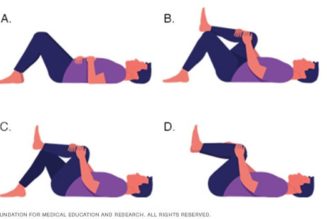
As demographics shift, life expectancy in the EU will only become more important as we grapple with an ageing population.
Life expectancy estimates are a critical tool to keep track of society’s well-being, but for policymakers, the trends are also fundamental to developing government policies.
France, for example, is grappling with the challenge of a longer-living population and the resulting strain on the social security system.
To address the challenge, the French government recently passed – with much resistance – a series of reforms aimed at increasing the retirement age and encouraging individuals to work longer.
But France is not alone with its ageing population, and they are not the ones living the longest. All across the EU, the life expectancy metric has been on an upward trajectory for several decades.
Who is living the longest in the EU?
In 2021, the average life expectancy at birth in the EU was 80.1 years, but the latest figures are relatively lower when compared to 2020 and 2019, probably as a result of the sudden increase in mortality because of the COVID-19 pandemic, according to data from Eurostat, the statistical office of the EU.
In 2019, life expectancy at birth reached an all-time high of 81.3 years but it then fell to 80.4 in 2020.
Despite the slight setback – from which we are likely to recover soon – the longevity line has been trending upward since the EU began recording data in the early 2000s, and official statistics reveal that life expectancy has risen, on average, by more than two years per decade since the 1960s.
Overall, across the bloc, women live longer than men (82.9 years vs 77.2 years in 2021), but people in certain countries – and even regions – live longer than others.
Likewise, not all nations have experienced the same progress across the years – or relapse in some particular cases – in their life expectancy estimates.
The country with the highest life expectancy at birth is Spain, with an average of 83.3 years, followed by Sweden (83.1 years), Luxembourg, and Italy (both 82.7 years).
The lowest lifespan is predicted in Bulgaria (71.4 years), Romania (72.8 years), and Latvia (73.1 years).
Country-by-country differences are interesting, but perhaps even more fascinating are comparisons of regions within the countries that score higher than the average on the long-life scale.
In Spain for example, people born in the region of Andalucia are expected to live around 81.7 years, but those living in the capital region, Madrid, are expected to live 85.4 years, over four years more.
Similar trends are observed in Italy. Italians living on the southern island of Sicilia can expect to live around 81.3 years, but those living in the north in Trentino, close to Austria’s border, have a life expectancy of 84.2 years, a gap of nearly three years.
Which countries have most improved their life expectancy at birth?
Estonians have extended their longevity the most, gaining 6.1 years in their life expectancy between 2000 and 2021. They are followed by Ireland (+5.8), Luxembourg (+4.7), Denmark (+4.6), and Slovenia (+4.5).
The gains of the top five are remarkable, especially when compared with other countries that have not fared that well in pushing life boundaries, or simply when compared with the EU average, which recorded a 2.5-year increase.
In Bulgaria, on the other hand, people are dying younger than before; the life expectancy at birth was 0.2 years less in 2021 than it was in 2000. The unfortunate reverse is thought to be a result of a number of factors, including a struggling healthcare system and stroke mortality rates higher than in most EU countries, according to the European Commission’s Health Report.
Life expectancy at age 65
Life expectancy at age 65 years old refers to the average number of years that a person at that age can be expected to live.
It is an interesting metric to look at because, for example, the life expectancy at birth for someone born in 1958 and is today 65 years old, does not consider contemporary variables, such as improved lifestyles, advances in healthcare, and so on.
In 2021, life expectancy at 65 was estimated at 19.2 years, 20.9 years for women, and 17.3 years for men.
France and Spain had the highest life expectancy at 65 in 2021 (21.4 years) and Bulgaria had the lowest (13.6 years).
For women, the highest life expectancy at 65 was in Spain (23.5 years) and the lowest was in Bulgaria (15.5 years) while for men, the highest was in Sweden (19.6 years) and the lowest was in Bulgaria (11.6 years).
Healthy life expectancy: the most important metric?
Healthy life expectancy at birth is also an important indicator of our population’s health. It signals, perhaps, the most important measure: whether our last years are lived in good health.
In 2020, the average number of healthy life years at birth in the EU was 64.5 years for women and 63.5 years for men. This number has also seen a cheerful evolution; it increased by 2.6 years between 2011 to 2020, rising from 61.4 healthy years to 64.
Sweden is the country that lives more healthy years across the EU block (women live, on average 72.7 healthy years, and men 72.8 healthy years. Swedes are followed by Italians and Maltese people, 68.7 vs 67.2 and 70.7 vs 70.2 healthy years without a disability, respectively.
Interestingly, Denmark, despite ranking high in the longevity scale, is far behind when it comes to healthy years, sitting 4th last, with women living 57.7 healthy years, and men 58.1.
Latvia is the county with the lowest number of healthy life years for both women and men, 54.3 and 52.6 respectively.
Why is life expectancy improving?
We are living longer – and healthier – for a number of factors. But the most important one is the reduction in infant mortality, defined as the death of an infant before his or her first birthday, according to Eurostat.
The chances that a newborn survives childhood have increased from 50 per cent to 96 per cent globally. Between 2011 and 2021, the infant mortality rate in the EU fell from 3.8 deaths per 1,000 births to 3.2 deaths per 1 000 births.
When extending the analysis to the last 20 years, the infant mortality rate has almost halved (6.2 deaths per 1 000 in 1999).
In 2021, the highest infant mortality rates in the EU were registered in Bulgaria (5.6 deaths per 1 000 births) and Romania (5.2 deaths per 1 000 births), and the lowest were recorded in Finland, Slovenia, and Sweden (all 1.8 deaths per 1 000 births).








